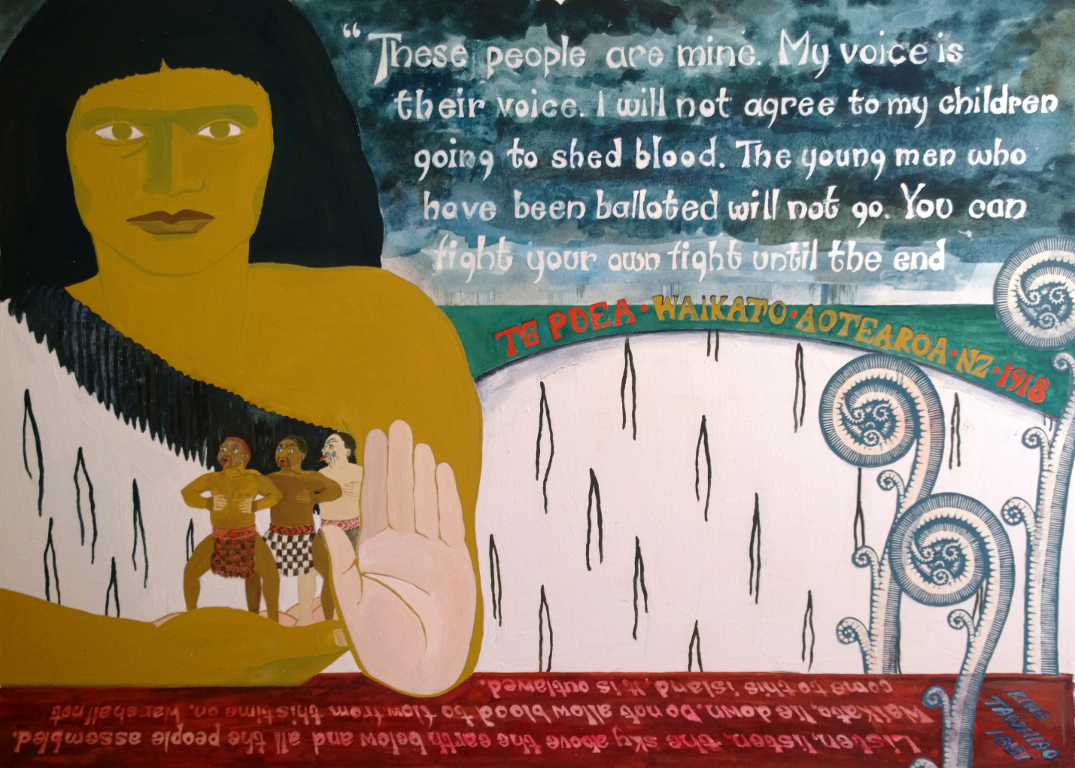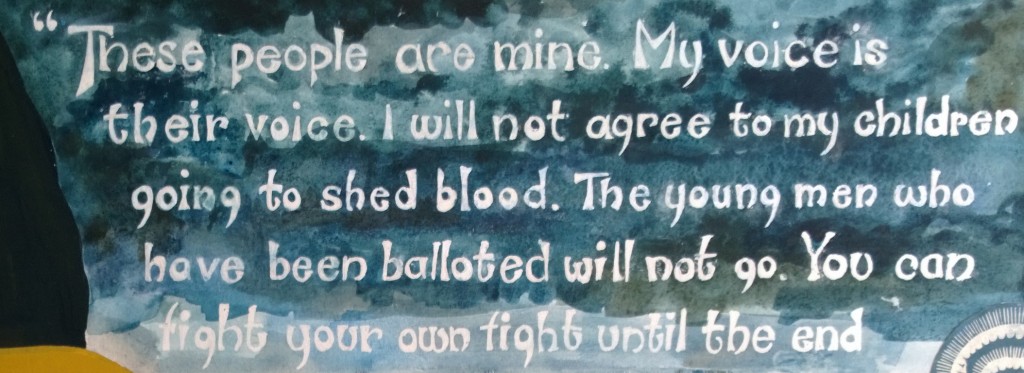They had been expected.
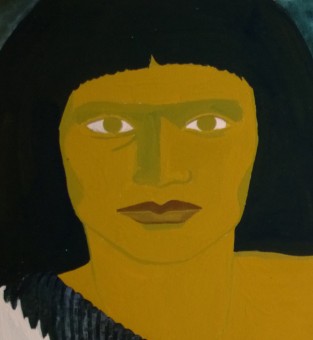 Indeed, they had been welcomed by a large crowd, including girls playing brass band instruments who, according to one newspaper account, ‘produced music of somewhat uncertain tune.’ [2] But now, in front of the four hundred assembled in the crowded meeting house, the time had come for them to finally fulfil their mission and arrest the King’s brother.
Indeed, they had been welcomed by a large crowd, including girls playing brass band instruments who, according to one newspaper account, ‘produced music of somewhat uncertain tune.’ [2] But now, in front of the four hundred assembled in the crowded meeting house, the time had come for them to finally fulfil their mission and arrest the King’s brother.
The Defence Minister had been advised that no more than two policemen ‘at the very most’ should be sent, but they were eight in number: two Sergeants and six constables. [3]
‘On account of the severity of the fighting in Europe, King George of England has asked the Government of New Zealand to assist in the war with all its men who owe allegiance to the Crown in New Zealand,’ Sergeant Waterman had explained. The Germans were ‘seeking to subdue the whole world’ and he appealed to Princess Te Puea ‘to help us to identify the men whose names I will read from this list.’ [4]
‘These people are mine’
Her response had been forthright:
‘These people are mine. My voice is their voice … I will not agree to my children going to shed blood …The young men who have been ballotted will not go … You can fight your own fight until the end.’ [5]
The police proceeded to read out the names of the seven men who had failed to parade for medical examination in the wake of the previous month’s ballot: Tame Wiremu, Hugh McKinnon, Teira Paora, Riki Karaka, Kori Maiti, Moki Taua, and the King’s sixteen-year-old brother Te Raungaanga Mahuta. [6]
When no-one stepped forward, the constables started to arrest people, mistakenly arresting the sixteen-year-old brother of one of the men and a sixty-year-old man in the process.
A ‘great sigh’ went up as the policemen stepped over the King’s personal flag, which a number of girls had spread in front of Te Raungaanga ‘as if to protect him’. [7] ‘[I]f Te Puea had but raised her little finger there would have been bloodshed’, one observer later claimed. But Te Puea counselled the assembly to remain calm. ‘I am not afraid of the law or of anything else excepting the God of my ancestors’, she told the policemen. ‘I will not allow any violence or blood to flow through my fingers’. [8]
Refusing to walk, all seven men had to be carried bodily to the two waiting motor cars.
With their arrests [9], on 11 June 1918, at Mangatawhiri near Mercer, a new phase began in the Waikato people’s remarkable campaign of nonviolent resistance to conscription, led by the Maori princess, Te Puea Herangi.
‘We’ve got a king. But we haven’t got a country’
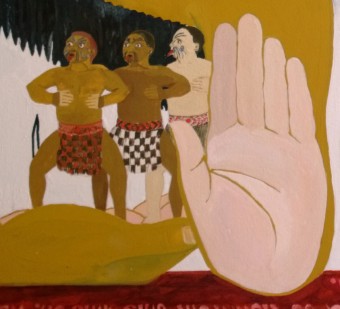 Like other colonial governments [10], Wellington initially opposed the idea of letting Maoris fight in the War, fearing that this could destabilise the racist status quo. [11] However, this opposition soon changed.
Like other colonial governments [10], Wellington initially opposed the idea of letting Maoris fight in the War, fearing that this could destabilise the racist status quo. [11] However, this opposition soon changed.
From early on in the War, the Waikato tribes of New Zealand’s northern island decided that they would not participate in the Imperial Government’s fight, and no Waikato volunteers sailed for Europe in either of the first two native contingents in February and September 1915. [12]
In public, ‘to make harrassment by the authorities and prosecution under wartime regulations more difficult’, their leadership – which included Te Puea and the Maori King, Te Rata – maintained that volunteering was a matter of individual choice. [13] However, in private they ‘actively discouraged enlistment’. [14]
Te Puea’s grandfather, the second Maori King, Tawhiao, had been a pacifist, telling the Resident Magistrate in 1881: ‘Listen, listen, the sky above, the earth below, and all the people assembled here. The killing of men must stop’ [15]. Thus, the Waikato had strong religious and cultural grounds for not volunteering.
A second reason was succinctly articulated by Te Puea:
‘They tell us to fight for king and country. Well, that’s all right. We’ve got a king. But we haven’t got a country. That’s been taken off us. Let them give us back our land and then maybe we’ll think about it again.’ [16]
The song of Te Puea
Conscription was brought in for paheka (ie. non-Maori New Zealanders) in August 1916, but Maori remained exempt at this time and by the end of the year the ‘[t]ribes of the Waikato, Taranaki, Maniapoto, Tuhoe and Ureweras, where special recruiting officers had been active since June’ were still resisting recruitment. [17]
Encouraged by the only Maori in the coalition war cabinet [18], conscription was finally extended to Maori on 26 June 1917 – though it was also immediately made plain that it would only apply to the Waikato. [19]
The Waikato then set about making it as difficult as possible for the Wellington government to conscript them, by ensuring that ‘[t]he task of completing a register for the Waikato’ became ‘an almost impossible feat’. [20]
The Inspector of Recruiting Services complained that most young men ‘no longer visit towns, but have taken back to the country, forests or settlements.’ [21] Meanwhile others foot-dragged, asking ‘if the call-up could be delayed until after the autumn shearing and harvest season.’ [22] ‘These problems’, Timothy Wineguard notes ‘led to a delay in gathering the first Maori draft, which did not occur until February 1918.’ [23]
A key moment in this phase of the campaign occurred in November 1917. By then some Waikato were wavering in their resistance, and Te Puea was asked to attend a hui (Maori assembly) to break the deadlock. She sang a song ‘advising Te Rata and his followers not to compromise’. [24]
The hui reaffirmed its opposition, and Te Puea became the leader of the anti-conscription campaign. Shortly afterwards she ‘sent word to all Waikato and Maniapoto men of conscriptional age to join her’ at her settlement in Mangatawhiri. [25]
‘I am simply pro-Maori’
Regarding them as traitors, local employers withdrew seasonal work from the Waikato, forcing Te Puea and others to take to the fields to cut flax for sale in order to feed themselves.
Following the arrests of 11 June 1918, the police returned repeatedly to arrest more men and to search for guns. [26] Non-cooperators were put on a bread and water diet, had their blankets taken away, and were eventually sentenced to two years imprisonment with hard labour. Te Puea would take food to the prisoners and sit outside the prison.
Accused of having German ancestry, she responded:
‘What if I am German? So is the British Royal Family. In fact I am neither pro-German nor anti-British. I am simply pro-Maori.’ [27]
At War’s end no conscripted Maori had served overseas, making the campaign one of the most successful examples of communal resistance to the war, violent or nonviolent. In May 1919, all remaining objectors were released from prison (against military advice), and the 100 unexecuted arrest warrants were annulled. [28]
Unarmed resistance
The Waikato were probably wise to keep their campaign unarmed and strictly nonviolent.
In 1915, the messianic Maori prophet and pacifist [29] Rua Kenana was arrested on charges of illegally selling liquor on the sacred mountain of Maungapohatu ‘because he had counselled against Maori volunteering’. [30] The following year an armed force of 67 policemen descended on Maungapohatu to arrest Rua, who was standing unarmed in his marae (a communal meeting place) with his two eldest sons, Whatu and Toko. [31]
‘Rua had not only not planned resistance but forbidden it’. [32] However, both his son and his uncle had guns and a petition from Rua’s community had earlier warned that ‘if a force came to take him, a gun would be fired in challenge’. [33] In the event, a shot was fired, most likely by the police, and in the ensuing gun battle two Maoris, including Toko, were killed. [34]
Indigenous resistance
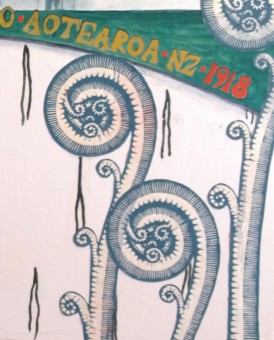 Rua, Te Puea and the Waikato were not the only indigenous people to resist the war.
Rua, Te Puea and the Waikato were not the only indigenous people to resist the war.
For example, in Canada in 1917, after conscription was introduced, ‘many Indians refused to register’, and in some cases ‘entire reserves … refused to comply out of defiance, some going so far as to conceal their young men’. [35] On the Sarcee Reserve in Alberta the government representative responsible for implementing federal Indian policy was so ‘disgusted with the regulations of his government’ that he ‘registered all eligible men only to exempt them, citing a fictitious outbreak of tuberculosis in the paperwork submitted to his superiors in Ottawa.’ [36]
Meanwhile, in the US, attempts to register Navajos and Utes in Colorado were suspended in June 1917 ‘after tribes threatened to attack the town of Ignacio’, and the following year ‘over two hundred Creeks in Oklahoma, angry over the draft regulations, killed three farmers and exchanged shots with US militiamen’. [37]
Exclusion and subjugation
In all, almost 110,000 indigenous people from the five British ‘Dominions’ were enlisted into the military during the First World War. [38] Yet, ‘[t]he social standing of indigenous peoples within the dominant British-based Dominion societies’ after the War ‘remained one of exclusion and subjugation’. [39]
Nowhere, was this clearer than in Australia, where Aborigines were repeatedly massacred by the settler population during the interwar period without legal redress, and ‘Aboriginal children were removed, without parental consent, from their communities and placed in institutionalized “educational” care’. [40]
In New Zealand, where over 2,800 Maoris enlisted, some 2.3 millions acres of land were wrested from Maori ownership ‘by fair means or foul’ between 1909 and 1920, leaving Maori with less than a million acres ‘suitable for settlement’. [41]
As the Government exhorts us to celebrate the hundreds of thousands of imperial subjects [42] who, in reality, fought and died ‘to defend the very nations and institutions which kept them in subjugation and robbed them of their identities’ [43], we should instead be celebrating the stories of those, like the Waikato, who resisted.
NOTES
[1] Michael King, Te Puea: A Biography, Hodder and Stoughton, 1977, p. 78.
[2] ‘Seven Maori reservists arrested’, Dominion, Volume 11, Issue 226, 12 June 1918, Page 6, http://paperspast.natlib.govt.nz/cgi-bin/paperspast?a=d&d=DOM19180612.2.60.
[3] King, op. cit., p. 88. ‘Maori Conscription’, Auckland Star, Volume XLIX, Issue 139, 12 June 1918, Page 4 , http://paperspast.natlib.govt.nz/cgi-bin/paperspast?a=d&d=AS19180612.2.43.
[4] King, op. cit., p. 89.
[5] Ibid.
[6] These are the names as listed in the 12 June 1918 issue of the Auckland Star, op. cit.
[7] King, op.cit., p. 89; Auckland Star, op. cit.
[8] King, op. cit., pp. 89 – 90.
[9] These were not the first arrests of the campaign. On 27 May 1918 the New Zealand Herald reported that a man named Taiwhaie had been sentenced to one month’s imprisonment with hard labour for having said ‘that if he received £1000 he would not go and fight’ and expressing a desire for a German victory. He repeated the claims twice when cautioned by police. The paper noted that ‘The case was brought as a warning to other natives, who, the police reported, were giving a good deal of trouble over the conscription issue.’ http://paperspast.natlib.govt.nz/cgi-bin/paperspast?a=d&d=NZH19180527.2.42.6. Earlier still, several Maori, including the King’s brother Tonga Mahuta, had been prosecuted for failing to report for territorial training (King, op.cit., p. 83).
[10] ‘Mobilisation in a colonial context was delicate’, note historians Robert Gerwarth and Erez Manela. ‘After all, a war fought on both sides with native auxillaries was likely to undermine the very principle on which colonialism rested: the notion of white racial superiority.’ (Robert Gerwarth & Erez Manela (eds), Empires at War, 1911 – 1923, Oxford University Press, 2014, p. 9).
[11] King, op. cit., p. 77.
[12] King, op.cit., pp. 77 – 78.
[13] King, op. cit., p. 77.
[14] Ibid.
[15] Ibid. Noting his ‘fundamentally pacifist nature’, the Dictionary of New Zealand Biography cites another of Tawhiao’s sayings: ‘Beware of being enticed to take up the sword. The result of war is that things become like decaying, old dried flax leaves. Let the person who raises war beware, for he must pay the price.’ R. T. Mahuta. ‘Tawhiao, Tukaroto Matutaera Potatau Te Wherowhero’, from the Dictionary of New Zealand Biography. Te Ara – the Encyclopedia of New Zealand, updated 22-Aug-2013. URL: http://www.TeAra.govt.nz/en/biographies/2t14/tawhiao-tukaroto-matutaera-potatau-te-wherowhero.
[16] King, op. cit., p. 78. ‘The second of the wars of the 1860s [between the New Zealand Government and various Maori tribes] had been contrived by the Government to break the autonomy and grab the land of the Waikato, Maniapoto, and Ngati Haua tribes … The Crown took 887,000 acres of land, mainly Waikato …’ (Paul Baker, King and Country Call: New Zealanders, Conscription and the Great War, Auckland University Press, 1988, p. 213).
[17] Timothy Wineguard, Indigenous Peoples of the British Dominions and the First World War, Cambridge University Press, 2011, p. 158.
[18] ‘only Maori’: King, op. cit., p.79; in a 1 February 1917 letter to the Department of Defence, the Maori in question, Maui Pomare, wrote: ‘There is only one way, I am afraid, of getting at the Waikatos, that is by having Section 50 of the Military Service Act, 1916, brought into operation, and I hope you will soon have a proclamation drafted in this connection’ (Wineguard, op. cit., p. 158).
[19] A 6 August 1917 memo sent to all MPs by the Defence Minister, James Allen, for them to disseminate to their Maori communities, explained that: ‘The compulsion of the Military Service Act need not be feared by the Tribes of New Zealand who voluntarily sent their sons in the services of the King and Empire’ (Wineguard, op. cit., p. 159). ‘[A]lthough officially conscription applied to ‘some or all North Island Maoris’ it was clear that unofficially it was intended to apply to the ‘Waikato-Maniapoto Land District’ only’, Timothy Wineguard notes (ibid.).
[20] Wineguard, op. cit., p. 159.
[21] Wineguard, op. cit., p. 159.
[22] Wineguard, op. cit., p. 159.
[23] Wineguard, op. cit., p. 159.
[24] King, op. cit., p. 87.
[25] King, op. cit., p. 88.
[26] King, op. cit., p. 90. Of course, no guns were found.
[27] King, op. cit., p. 95.
[28] Wineguard, op. cit., p. 159. At the war’s end, of the 552 Maoris who had been registered, 254 had been ‘found ineligible or medically unfit … 11 were serving prison sentences, [and] 139 were unaccounted for, with over 100 arrest warrants unexecuted.’ Only 74 were in military training, with a further 74 in the process for either duty or imprisonment.
[29] Baker, op. cit., p. 214. According to Baker ‘[a]mong Rua’s beliefs was a strong pacifism derived from the Bible’.
[30] See Judith Binney. ‘Rua Kenana Hepetipa’, from the Dictionary of New Zealand Biography. Te Ara – the Encyclopedia of New Zealand, updated 30-Oct-2012. URL: http://www.TeAra.govt.nz/en/biographies/3r32/rua-kenana-hepetipa.
[31] See ibid. and Wineguard, op. cit., p. 226.
[32] Baker, op. cit., p. 215.
[33] Ibid.
[34] According to Binney, op cit., ‘The senior police officers later orchestrated the police evidence, stating that the first shot was fired by a Maori and was part of a planned ambush; the Maori stated it was a police shot. The weight of evidence supports the Maori case, although the matter is unlikely ever to be decisively resolved. Perjury was also committed by the police concerning the two Maori deaths; Toko, who was initially wounded when he grabbed a gun and began to fire at the police, was probably summarily executed. Legally, Rua’s arrest was an assault, as it had taken place on a Sunday for a minor offence. Cullen, as commander, was guilty of the use of excessive force. At least one of the Gisborne policemen, Arnold Butterworth, thought that not only was Rua’s arrest illegal but ‘that Cullen would be guilty of eleven charges from murder or manslaughter down to common assault’.’ Rua was subsequently sentenced to a year’s hard labour, followed by 18 months’ imprisonment, for having ‘morally’ resisted arrest on an earlier occasion in which no violence, even defensive, was employed (ibid.). According to Michael King ‘Te Puea expressed sympathy for Rua’s stand, and for him after his subsequent conviction’ (see endnote ‘l’ to ‘Conscription and Pai Marire’ in the Penguin edition of Te Puea). According to Baker, Rua was released in April 1918 ‘as a result, it seems, of promising now to support the war’, and ‘did produce volunteers – some 80 of them by the war’s end’, though ‘[m]any were obviously underage or unfit’ and he ‘calculated that the war would end before any of the fit men reached it’ (Baker, op cit., pp. 218-19).
[35] Wineguard, op. cit., pp. 153-154.
[36] Ibid. ; ‘Indian Agents’, http://plainshumanities.unl.edu/encyclopedia/doc/egp.pg.032.
[37] Wineguard, op. cit., p. 226.
[38] Ibid., p. 264. The five British dominions, with their enlistment rates, were as follows: Canada (4,000), Australia (580), Newfoundland (?), New Zealand (2,816), and South Africa (102,110).
[39] Ibid., p. 263.
[40] Ibid., p. 251. In 1928, William Murray, a veteran of Gallipoli, led several punitive expeditions in the Northern Territory, killing roughly 60 aborigines, including women and children, in retaliation for the killing of a dingo hunter, Frederick Brooks. A 1929 Board of Inquiry deemed these actions to have been ‘justified’, on the grounds that ‘the natives killed were all members of the Walmulla [sic] tribe from Western Australia, who were on a marauding expedition, with the avowed object of wiping out the white settlers.’ Similar massacres occurred in 1924 and 1926.
[41] Ibid., p. 226.
[42] For example, in 2013, in the context of launching the government’s ‘flagship programme … reveal[ing] the crucial contribution of the Commonwealth countries during the First World War’, David Cameron declared that ‘In battlefields across the world today are the graves of people of all faiths and people of no faith, side by side. They fought together, they fell together, and together they defended the freedoms we enjoy today.’ https://www.gov.uk/government/news/commonwealth-contribution-to-first-world-war-to-be-commemorated.
[43] Glenford Delroy Howe, Race, War and Nationalism: A Social History of West Indians in the First World War, Ian Randle Publishers, 2002, p. xii.

